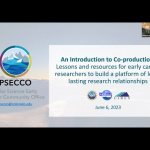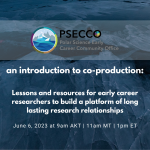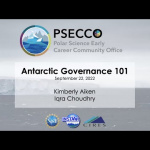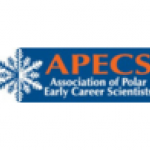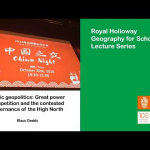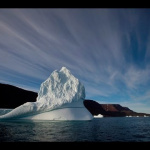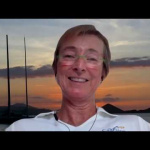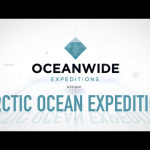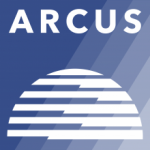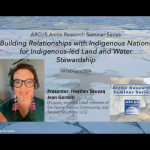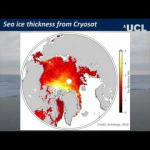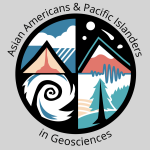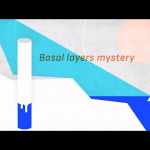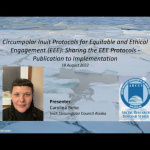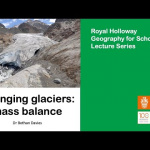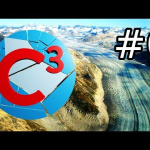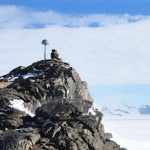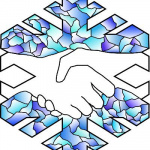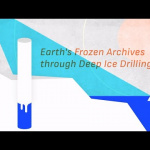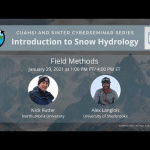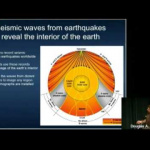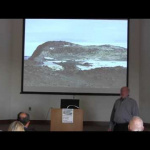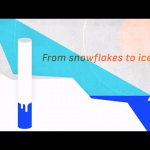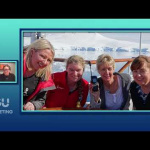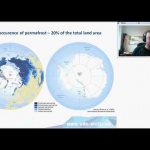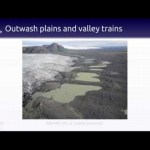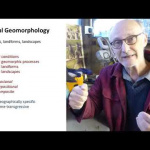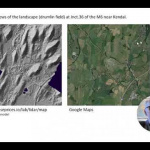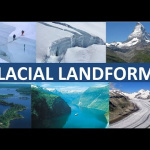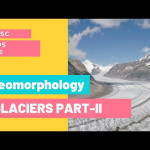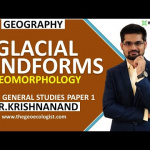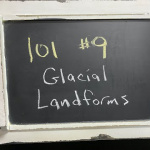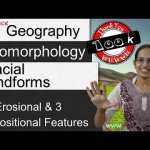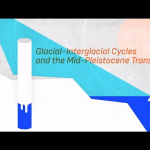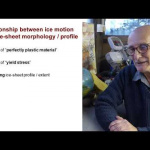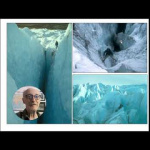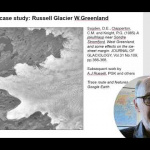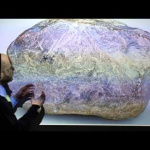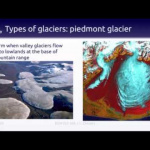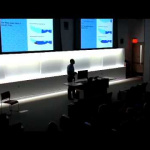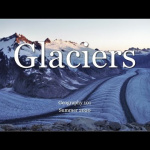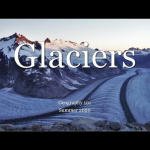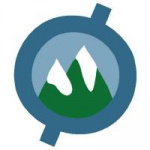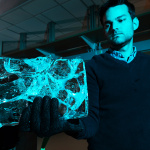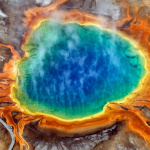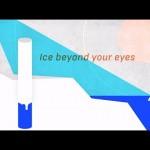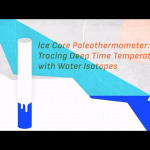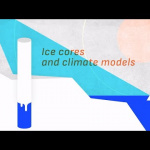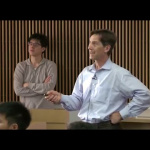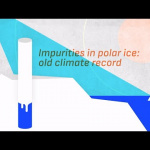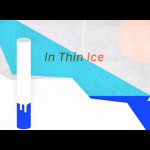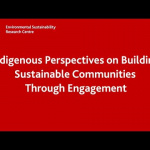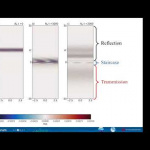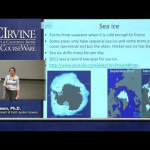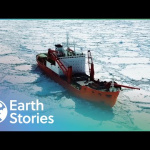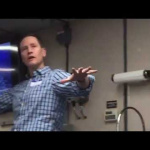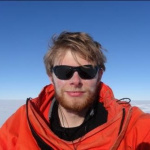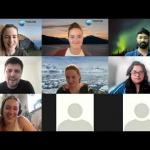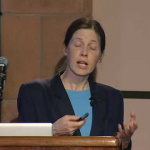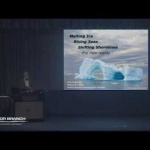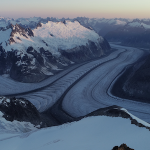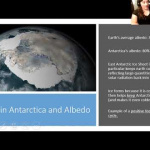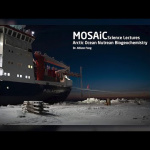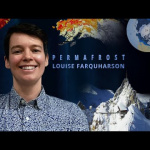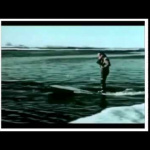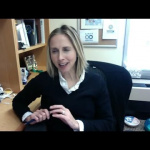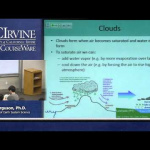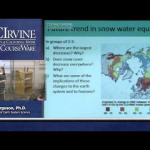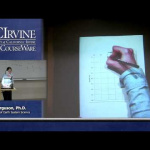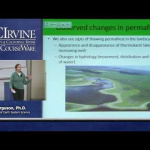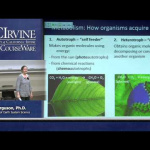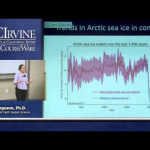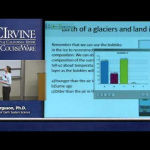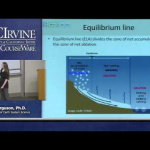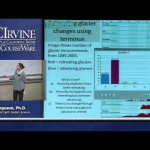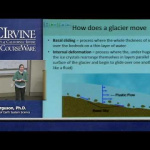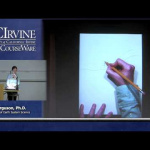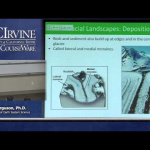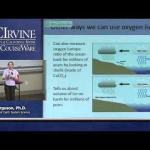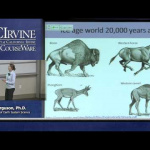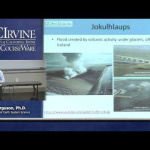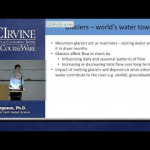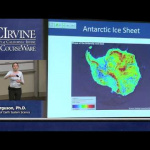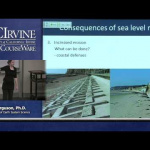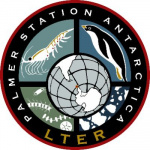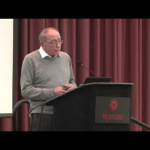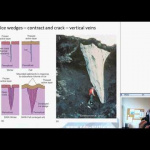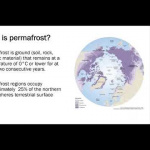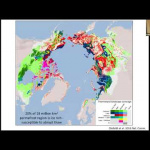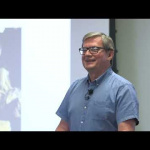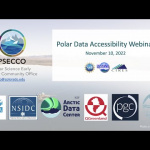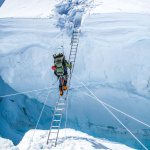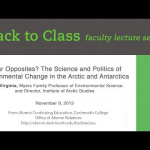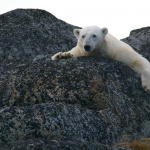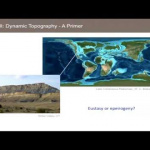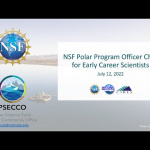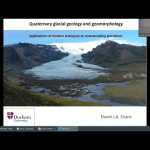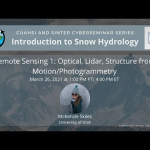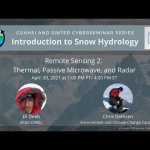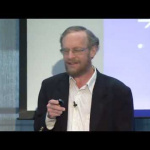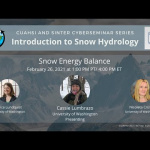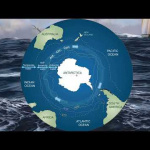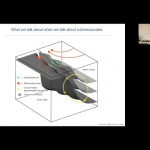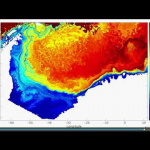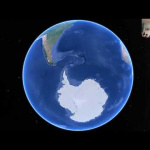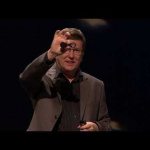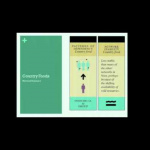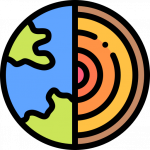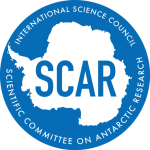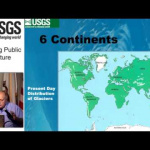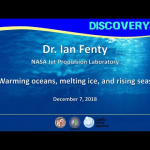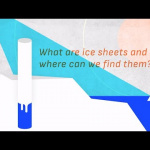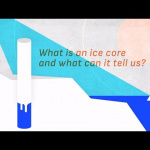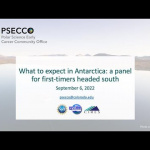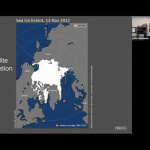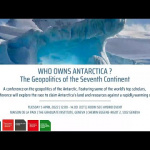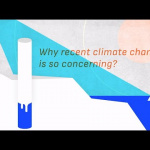Polar Education Materials
Below the search box you can find the start of our compilation of polar or polar-adjacent resources for polar early career scientists and educators, specifically pages sharing resources related to folks early in their career, matters of BAJEDI or community-building. If you have or know of a an educational resource that you would like shared here, please get in touch with us at psecco@colorado.edu!
We have different resource types and tags for our resources. These include but are not limited to:
- Data, Maps, and Software: Open access external datasets, maps, and lab software for polar information sciences.
- Education and Outreach: Outreach opportunities for early career scientists and those in education.
- Labs: Interactive learning tools to learn more about varying subjects.
- Lectures: Videos taught by instructors from varying institutions covering polar topics.
- Problem Sets: Interactive problem sets to practice taught material.
- Webinar: PSECCO hosted Webinars that have been recorded and reposted for ease!
You can also filter by topic, or use Comm ⌘ + Select on Mac or Ctrl + Select on PC to filter by multiple topics!
An Introduction to Co-Production of Knowledge - July 2023 Panel
PSECCO Webinar
Co-production of knowledge in Arctic research brings together multiple ways of knowing and emphasizes equity in research. This discussion panel will provide an introduction to co-production of knowledge with an emphasis on providing tips and resources for early career researchers. Four co-production experts will be asked questions to introduce the concept of co-production, discuss ways in which early career researchers can approach co-production in Arctic research, and share lessons about long-term relationship building.
Antarctic Governance 101
PSECCO Webinar
Headed to Antarctica and curious to learn more about governance of the region? Learn more about governance past, present and future down south.
Antarctica belongs to no-one, yet is home to science and scientists from around the world—making it a place like no other. Learn from Dr. Iqra Choudhry and Kimberly Aiken about the history, current landscape and future considerations for governing this unique environment.
Antarctica: Isolated Continent
Professor Dame Jane Francis
This lecture is a 60-minute long video and courtesy of Darwin College Lecture Series.
YouTube Description:
APECS Career Resources
The Association of Polar Early Career Scientists (APECS) has curated this page to include resources such as a job board, funding database, mental health database, and more.
Arctic Geopolitics
Professor Klaus Dodds
This lecture is 25 minutes long and is courtesy of Royal Holloway, University of London.
YouTube Description:
"Join Professor Klaus Dodds for this final Royal Holloway Geography for Schools lecture of the 2010-21 academic year. Klaus is a renowned world expert in the governance of the polar regions, and in this lecture he will exploring how and why the Arctic in particular has become so central to the geopolitical ambitions of traditional and emerging powers."
Arctic Governance: Inside the Issues
Michael Byers and Andrew Thompson
This lecture is 21 minutes long and is courtesy of the Centre for International Governance Innovation.
YouTube Description:
Arctic Meltdown and Unruly Tropical Storms - How Are They Connected?
Dr. Jennifer Francis
This lecture is 52 minutes long and is courtesy of Woodwell Climate Research Center.
YouTube Description:
"Hurricane season officially begins June 1st, with forecasts warning it may be worse than the historic average. Extreme weather now costs the U.S. more than $10 billion each year. WHRC senior scientist Dr. Jennifer Francis has pioneered the science linking rapid warming in the Arctic to weather here in the U.S. – from snowstorms in the northeast, to flooding and drought in the Midwest, and tropical storms in the Atlantic."
Arctic Ocean - The Case for Maritime Governance
Adm. Robert J. Papp Jr.
This lecture is a 81-minute (1:21 hr.) long lecture courtesy of the U.S. Naval War College.
YouTube Description:
Arctic Ocean Expedition
Florian Piper and Andreas Alexander
This video is a 63-minute long presentation. and was courtesy of OceanWide Expeditions.
This video covers topics like Fair Isle, Jan Mayden, and Svalbard.
ARCUS Arctic Links
Includes links provided by the Arctic Research Consortium of the United States (ARCUS)to information about Arctic academic programs, centers, and research experiences along with interdisciplinary collaboration. You can also find information here on ways to connect with Alaska Native communities.
ARCUS Arctic Research Seminar w/ Heather Gordon: Building Relationships with Indigenous Nations
ARCUS
Building Relationships with Indigenous Nations for Indigenous-led Land and Water Stewardship Archive recording from 14 February 2024.
Are We Waking Up the Sleeping Arctic Ocean?
Dr. Michael Tsamados
This lecture is a 40-minute long video and courtesy of University College London Lunch Hour Lectures.
YouTube Description:
"Temperatures in the Arctic are rising at more than twice the global average rate. As the sea ice cover retreats, there is a radiation imbalance and a modification of the Arctic Ocean circulation, and as the atmosphere and ocean come into direct contact, exchanges of heat and momentum will potentially be transformed. Dr Michel Tsamados will discuss the implications for the Arctic climate system and beyond."
Asian Americans and Pacific Islanders in Geosciences Resources Page
While the AAPI in Geosciences page is still under construction with its own resources, it directs people towards excellent resources hosted on other sites.
Basal layers mystery
DEEPICE Project
In this video, Lisa explains what basal ice is, and why this very deep ice is very special and interesting to study. In 2024, Lisa Ardoin is a 3rd year PhD student at ULB, in Brussels, Belgium. DEEPICE Stories – Insights into Ice & Climate is a series of 15 videos created in collaboration with the 15 PhD students of the European research project DEEPICE. These 3-minute educational video clips give an overview of scientific research on ice cores.
Basin-Scale Effects
Dr. Lizz Ultee
"We have seen how changes in slope or temperature can affect a glacier. In many places, there is not just one glacier, but many. Suppose we have a river that gets water from 3 different glaciers. How can we use our model to find out the changes in all of those glaciers?"
Carolina Behe (ICC Alaska): Circumpolar Inuit Protocols for Equitable and Ethical Engagement
ARCUS
Increasingly, Inuit are faced with climate change, resource development, research, wildlife management, and a host of other issues and related discussions. Inuit hold solutions for how to address these challenges and proven sustainable holistic approaches to having a balanced relationship within the Arctic. At the international level, these topics as well as threats to biodiversity, shipping, and other adverse impacts to food security are constantly present. Yet Inuit communities and Knowledge have not been considered equitably.
Challenges of past temperature reconstruction from ice cores
DEEPICE Project
In this video, Inès explains why the reconstruction of past temperatures by the analysis of ice cores is challenging, as well as the processes that affect the record of the temperature. In 2024, Inès Ollivier is a 3rd year PhD student at the University of Bergen, Norway. DEEPICE Stories – Insights into Ice & Climate is a series of 15 videos created in collaboration with the 15 PhD students of the European research project DEEPICE. These 3-minute educational video clips give an overview of scientific research on ice cores.
Changing Glaciers: Mass Balance
Dr. Bethan Davies
This lecture is a 30 minute video and courtesy of Royal Holloway, University of London (RHUL).
This lecture covers ice in the world today, ice lost, ice sheets, glaciers, mountain glaciers, climate change, and glacier climate change.
Cold and Warm Glaciers
Dr. Simon Clark
This video is 20-minutes long.
YouTube Description:
"The faster than expected speed of ice explained! The role of water in enabling the flow of ice across the landscape is explored along with the basics of sediment deformation and its contribution to the total speed at which ice can flow."
Continental Loss: The Quest to Determine Antarctica's Contribution to Sea-Level Change
Professor Matt A. King
This lecture is a 64-minute (1:04 hr.) long video that is courtesy of the Royal Society.
YouTube Description:
CryoCommunity Resource Map
Includes resources for the cryosphere community related to: teaching, fieldwork, community-building, glacier names, applications and hiring, funding, professional development, core work resources, making presentations accessible.
Dataset - Regional Ocean/Sea Ice Reanalysis
Dr. Molly Carton and Dr. James Carton
"The goal of the Simple Ocean Data Assimilation (SODA) project is to reconstruct the historical physical (and eventually biogeochemical) history of the ocean back (eventually) to the beginning of the 20th century. As its name implies, SODA uses a simple architecture based on community standard codes with resolution chosen to match available data and the scales of motion that are resolvable. Agreement with direct measurements (to within estimates of the observational error) as well as unbiased statistics are expected.
Deformation, Sliding, and Surging
Dr. Lizz Ultee
"The motion of glaciers is determined by two main processes: One is internal deformation of ice due to gravity and the other is basal sliding. These processes can be described by parameters. In this notebook we will examine their influence on glacier shape, and we will attempt to simulate a surge cycle."
Earth's Frozen Archives through Deep Ice Drilling
DEEPICE Project
In this video, Miguel presents how ice cores are drilled in polar regions such as Greenland and Antarctica. In 2024, Miguel Angel Sanchez Moreno is a 3rd year PhD student at the University of Copenhagen, in Denmark. DEEPICE Stories – Insights into Ice & Climate is a series of 15 videos created in collaboration with the 15 PhD students of the European research project DEEPICE. These 3-minute educational video clips give an overview of scientific research on ice cores.
Equation Derivation - Estimating Subshelf Melting
Dr. Jonathan Kingslake
This website has many videos, but the one we are focusing on in this list is Ice Shelf Melting by Jonathan Kingslake, courtesy of Columbia University.
This video is 18 minutes long and covers Antarctic ice flow, equation mathematics, and geophysics.
Exploring Glacier Data
Dr. Lizz Ultee
"Where are there glaciers on Earth today, and why? What determines how large they can grow - and therefore how much they can contribute to sea level rise? And how do glaciologists keep track of all of this?
Field Methods - Introduction to Snow Hydrology
Consortium of Universities for the Advancement of Hydrologic Science, Inc.
Speakers: Nick Rutter (Northumbria University) Alex Langlois (University of Sherbrooke)
In this webinar we will discuss: 1) why we still need to measure snow properties in the field, 2) how to measure snow depth, density and water equivalent, and 3) how to measure snow microstructural properties. We will illustrate a range of traditional and state-of-the-art field snow measurement techniques and engage in small group discussions on the considerations required to capture temporal and spatial variability in seasonal snowpacks.
Fire & Ice - Volcanoes, Earth Structure, and the Evolution of the Antarctic Ice Sheet
Dr. Douglas A. Weins
This lecture is 46-minutes long and courtesy of IRIS Earthquake Science.
YouTube Description:
Flowline Model
Gerard Roe
This resource by Gerard Roe is a .m file, or script file and is a simple text file where you can place MATLAB commands. Download the code to learn more.
Frieze Lecture: Dawn of Antarctic Exploration
Dr. William Hammer
This lecture is 55 minutes long and is courtesy of Augustana College.
YouTube description:
"Dr. William Hammer, Fritiof Fryxell Chair in Geology, notes that 1841 marks the dawn of Antarctic exploration. British naval Captain James Ross, commanding HMS Erebus and HMS Terror, discovered what they named the Victoria Barrier, and would later be renamed the Ross Ice Shelf. Hammer is the discoverer of the first dinosaur remains unearthed in Antarctica."
From snowflakes to ice
DEEPICE Project
In this video, Romilly presents the transformation from snowflakes to ice and explains how bubbles of air become trapped in the ice. In 2024, Romilly Harris Stuart is a 3rd year PhD student at CNRS, at LSCE (Gif-sur-Yvette, France). DEEPICE Stories – Insights into Ice & Climate is a series of 15 videos created in collaboration with the 15 PhD students of the European research project DEEPICE. These 3-minute educational video clips give an overview of scientific research on ice cores.
Frontiers of Geophysics Plenary Lecture: Hearts in the Ice
Hilde Fȧlun Strøm and Sunniva Sorby
This lecture is a 64-minute long video and is courtesy of the American Geophysical Union (AGU) Fall Meeting.
YouTube description:
Frozen Ground
Dr. Tomasz Wawrzyniak
This video is 40 minutes long and is courtesy of EDU-Arctic.
YouTube Description:
GIS Closed Source Models - Ice Flow and Mass Balance
Johannes Landmann
Explore this list of data sources, models, tools, and organizations provided by Johannes Landmann.
GIS Closed Source Models - Sub/Englacial Hydrology
Johannes Landmann
Explore this list of data sources, models, tools, and organizations provided by Johannes Landmann.
GIS Data - Global Data
Johannes Landmann
Explore this list of data sources, models, tools, and organizations provided by Johannes Landmann.
GIS Data - National Data
Johannes Landmann
Explore this list of data sources, models, tools, and organizations provided by Johannes Landmann.
GIS Educational Tools and Data - Glaciers and Ice Sheets
Johannes Landmann
Explore this list of data sources, models, tools, and organizations provided by Johannes Landmann.
GIS Open Source Model - (Surface) Mass Balance Only
Johannes Landmann
Explore this list of data sources, models, tools, and organizations provided by Johannes Landmann.
GIS Open Source Model - Calving/Frontal Ablation
Johannes Landmann
Explore this list of data sources, models, tools, and organizations provided by Johannes Landmann.
GIS Open Source Model - Hydrology
Johannes Landmann
Explore this list of data sources, models, tools, and organizations provided by Johannes Landmann.
GIS Open Source Model - Ice Flow and Mass Balance
Johannes Landmann
Explore this list of data sources, models, tools, and organizations provided by Johannes Landmann.
GIS Open Source Model - Miscellaneous
Johannes Landmann
Explore this list of data sources, models, tools, and organizations provided by Johannes Landmann.
GIS Open Source Model - Sub/Englacial Hydrology
Johannes Landmann
Explore this list of data sources, models, tools, and organizations provided by Johannes Landmann.
GIS Visualization Tools - Glaciers and Ice Sheets
Johannes Landmann
Explore this list of data sources, models, tools, and organizations provided by Johannes Landmann.
Glacial Geomorphology
Dr. Robert McNabb
This video is 45 minutes long is courtesy of Ulster University. This lecture covers depositional landforms, subglacial bedforms, palaeoglaciology and ice sheet reconstruction, and past glaciation in Ireland.
Glacial Geomorphology 1
Dr. Peter Knight
This video is 10 minutes long and is the first video of a 2-part series.
This is an introduction to Glacial Geomorphology - glacial conditions, geomorphic processes, landforms, and landscapes (erosional, depositional, composite).
Glacial Geomorphology 2
Dr. Peter Knight
This video is 26 minutes long and is the second video in a 2-part series. It covers glacial conditions, geomorphic processes, landforms, and landscapes.
Glacial Landforms
Dr. Kashif Imdad
This video is 30 minutes long and includes discussion on glacial erosional and depositional landforms including Glacio-Fluvial Deposits and Crevasse.
Glacial Landforms - Basics of Glaciers Part 1
Planet Geology
This is the first video in a 2-part series. This lecture is 24 minutes long.
Learn more about glacial landforms, formations of glaciers, typers of glaciers, and more.
Glacial Landforms - Basics of Glaciers Part 2
Planet Geology
This is the second video in a 2-part series and the video is 12 minutes long.
Learn more about glacial processes, erosion by glaciers, glacial landforms, and more.
Glacial Landforms - Erosional and Depositional Features by Glacier
Dr. Krishnanand Jha
This video is 19 minutes long and is available via The Geoecologist on YouTube.
Description on YouTube:
Glacial Landforms - Nick Zentner
Prof. Nick Zentner
This video is 101 minutes (1:41 hr.) long.
This video covers alpine glacier anatomy - zones and moraine - and landforms - depositional and erosional.
Glacial Landforms: 25 Erosional and 3 Depositional Features
Dr. Manishika Jain
This video is 30 minutes long and covers 25 erosional and 3 depositional geographic glacial landforms.
Glacial Movement
Nicoletta Christina
This video is 25 minutes long. This lecture focuses on how glaciers move, glacier types, ice-mass balance, plastic flow, basal sliding, ice, and crevasses.
Glacial-Interglacial Cycles and Mid-Pleistocene Transition
DEEPICE Project
In this video, Daniel presents the glacial-interglacial cycles that have characterised the climate over the last two million years, during the Pleistocene period, and explains what the mid-Pleistocene transition is. In 2024, Daniel Gunning is a 3rd year PhD student at the University of Bergen, in Norway. DEEPICE Stories - Insights into Ice & Climate is a series of 15 videos created in collaboration with the 15 PhD students of the European research project DEEPICE. These 3-minute educational video clips give an overview of scientific research on ice cores.
Glacier Dynamics and Ice Sheet Morphology
Dr. Peter Knight
This video is 30 minutes long and covers glacier dynamics and morphology. This video includes notes on yield stress, models of perfectly plastic ice sheets, ice-sheet morphology, and non-climactic galcier fluctuations.
Glacier Hydrology and Meltwater Part 1
Dr. Peter Knight
This video is the first in a 2-part series and is 36-minutes long. It covers an overview of water in glaciers, basal hydraulic systems, links between glacier hydrology and ice dynamics, meltwater and melwater regimes, and more.
Glacier Hydrology and Meltwater Part 2
Dr. Peter Knight
This is the second video in a 2-part series and is 27 minutes long.
This video covers waters in glaciers, glacier behavior, water in sediment transfer, and glacial/proglacial environments.
Glaciers - Gazdonian Productions
Gazdonian Productions
This lecture is 20-minutes long. This video covers glaciers, continental glaciers, moraine, sediment, drumlin, glacial erratic, glacial outwash, esker, Kettlelink, glacial striations, glacier shaped valleys.
Glaciers - Ulster University
Dr. Robert McNabb
This lecture is 45 minutes long.
This video covers geomorphology, glaciers, glacial geomorphology, glacial erosional landforms, and glacial sediments. This video is courtesy of Ulster University.
Glaciers - University of Alaska Fairbanks
Professor Martin Truffer
This lecture is a 60-minute long video. This video covers an introduction to ice sheets, modelling ice sheet flow, thermodynamic drivers of ice sheet decay, and marine ice sheet instability.
YouTube Description:
Glaciers as Water Resources
Dr. Lizz Ultee
"Our previous notebooks showed how to use OGGM to explore theoretical questions about glaciers: the effect of a different bed slope, the equilibrium line altitude, the mass balance gradient, etc. Now how do we use OGGM to explore real-world glaciers? This notebook gives us some tools."
Glaciers in a Changing Climate
Dr. Lizz Ultee
"As we have discussed, glaciers change their shape in response to long-term trends in climate. If there was no long-term trend in the climate, that is if the environmental conditions were more or less stable, a glacier could eventually reach an equilibrium with its local climate. In this notebook, we will investigate equilibrium states for different climates. We will also see what happens when our glacier experiences an abrupt change in climate and when it experiences a long-term climate trend."
Glaciers Part 1
Sasha Leidman
This lecture is a 16-minute long video.
Description as listed on YouTube:
"This is part 1 of the second lecture for week 5 of Rutgers Geography Department course 450:101 Earth Systems. The lecture covers concepts around glaciology including types of glaciers and glacial features, their impact on the geologic record, and how they are impacted by climate change."
Glaciers Part 2
Sasha Leidman
This video is 32 minutes long.
Description on YouTube:
"This is part 2 of the second lecture for week 5 of Rutgers Geography Department course 450:101 Earth Systems. The lecture covers concepts around glaciology including types of glaciers and glacial features, their impact on the geologic record, and how they are impacted by climate change."
Glaciology Practicals
Dr. Jonathan Kingslake
Check out this list of resources on glaciology practicals by Jonathan Kingslake.
Glaciology Theory Workshop
Dr. Lizz Ultee
"This lab will apply a version of the CREATE method to help you analyze a published work of (mostly) theoretical glaciology. The goals are to (1) practice recognizing and following along with the mathematical concepts we have been reviewing, (2) engage more deeply with the primary literature of our discipline; and (3) communicate science with each other."
Glaciology Theory Workshop
Dr. Lizz Ultee
"Lots of glaciological research now is supported by computational tools, which we'll explore this week. To make best use of those computational tools, we need to develop physical intution for the systems of interest. The goal of this lab is to practice problem-solving with the tools available to us."
GMALL Lectures - The Arctic Ocean and the North Pole
Dr. David Golibersuch
This lecture is a 90-minute (1:30 hr.) long video. It covers David Golibersuch's 1999 trop to the North Pole and the "environmental changes since that visit."
Graduate School Application Station
Acts as a one stop shop for navigating the grad school application process. The GeoGradApp provides you with some tips and tricks for applying to graduate school in the Geosciences in the United States.
Graphics - Debris-Covered Glaciers
Lindsey Nicholson (adapted from Anne Maussion)
"A collection of free glacier graphics that can be used for education and outreach."
Graphics - Glacier as Low-Pass Filters
Fabien Maussion
"A collection of free glacier graphics that can be used for education and outreach."
Graphics - Introduction to Glaciers
Anne Maussion
"A collection of free glacier graphics that can be used for education and outreach."
Greenhouse gases in the atmosphere and trapped in old ice
DEEPICE Project
In this video, Hanne explains the variations of greenhouses gases in the atmosphere and the links with climate. In 2024, Hanne Notø is a 3rd year PhD student at the University of Utrecht, in the Netherlands. DEEPICE Stories – Insights into Ice & Climate is a series of 15 videos created in collaboration with the 15 PhD students of the European research project DEEPICE. These 3-minute educational video clips give an overview of scientific research on ice cores.
Grounding Line Stability
Dr. Alex Robel
This lecture by Dr. Alex Robel explores grounding line stability, linear stability analysis, and features a Jupyter notebook activity at the end. This lecture is a 68-minute (1:08 hr.) long video.
GROW: Geoscience Resources on Opportunities in the Workforce
"A collection of non-academic career resources for geoscience students, mentors, and departments. Use this tool to discover career pathways, explore occupations, view career profiles, and learn how to find a geoscience position that fits your skills and interests."
History of Ice/Paleo
Dr. Alex Robel
This lecture by Dr. Alex Robel is about the history of ice and paleontology and includes a 73-minute (1:13 hr.) video detailing changes on the globe throughout time affecting geography and ice.
How is Antarctica Changing and Why Should We Care?
Professor Martin Siegert
This lecture is a 64-minute (1:04 hr.) long video courtesy of the Imperial College London.
Topics in this video include: Antarctica, discovery of the Arctic, glacial theory, dogs, shackleton, snow cruisers, Hubert Wilkins, International Polar Year, overland traverse, seismic sand, and much much more.
I.D. Antarctica
Center for Advancing Research Impact in Society (ARIS) and Rutgers University.
"Join Andrew Corso, a PhD candidate at the Virginia Institute of Marine Science as he ventures to the waters off the coast of the Western Antarctic Peninsula. On his research cruises, he ran across a number of “mystery” creatures in the ocean and air. Can you help him identify these fascinating Antarctic creatures?"
Ice beyond your eyes
DEEPICE Project
In this video, Florian explains the crystalline structure of ice and what glaciologists can learn from ice crystals. In 2024, Florian Painer is a 3rd year PhD student at AWI, in Bremerhaven, Germany. DEEPICE Stories – Insights into Ice & Climate is a series of 15 videos created in collaboration with the 15 PhD students of the European research project DEEPICE. These 3-minute educational video clips give an overview of scientific research on ice cores.
Ice Core paleothermometer : tracing deep time temperatures with water isotopes
DEEPICE Project
In this video, Eirini explains how it is possible to reconstruct past temperatures, by studying water isotopes measured on ice cores taken from polar regions. In 2024, Eirini Malegiannaki is a 3rd year PhD student at the University of Copenhagen, Denmark. DEEPICE Stories - Insights into Ice & Climate is a series of 15 videos created in collaboration with the 15 PhD students of the European research project DEEPICE. These 3-minute educational video clips give an overview of scientific research on ice cores.
Ice cores and climate models
DEEPICE Project
In this video, Qinggang explains why and how the data recorded in ice cores can be used for climate modelling. In 2024, Qinggang Gao is a 3rd year PhD student at the British Antarctic Survey, in Cambridge, United Kingdom. DEEPICE Stories – Insights into Ice & Climate is a series of 15 videos created in collaboration with the 15 PhD students of the European research project DEEPICE. These 3-minute educational video clips give an overview of scientific research on ice cores.
Ice Cores, Sea Level and Abrupt Climate Change
Dr. James White
This lecture is a 79-minute (1:19 hr) long video. This video is courtesy of UC Irvine Department of Earth System Science.
This lecture will introduce glacier topics, specifically in Greenland. Then dives into topic of climate change through historical records and its impacts on the ocean and atmosphere.
Ice cores: Atmospheric history in air bubbles
DEEPICE Project
In this video, Lison explains how the concentration in greenhouse gases of the past atmosphere can be reconstructed thanks to the air bubbles that can be found in the ice from regions such as Antarctica. In 2024, Lison Soussaintjean is a 3rd year PhD student at the University of Bern, in Switzerland. DEEPICE Stories – Insights into Ice & Climate is a series of 15 videos created in collaboration with the 15 PhD students of the European research project DEEPICE. These 3-minute educational video clips give an overview of scientific research on ice cores.
Ice Deformation Basics
Dr. Alex Robel
This lecture by Dr. Alex Robel is about ice deformation basics and walks through an introduction to the movement of ice and appropriate calculations. It includes a 69-minute (1:09 hr.) long video.
Ice Flow Equations 1
Dr. Alex Robel
This is the first video in a 2-part lecture by Dr. Alex Robel about ice flow equations and includes a fast-paced introduction to ice flow mathematics. This video is 35 minutes long.
Ice Flow Equations 2
Dr. Alex Robel
This is the second video in a 2-part lecture by Dr. Alex Robel about ice flow equations and expands on previous mathematic concepts regarding ice flow mathematics. This is a 75-minute (1:15 hr.) long video.
Ice Sheet Modeling
Dr. Alex Robel
This lecture by Dr. Alex Robel is about ice sheet modeling, the spectrum of ice-sheet model complexity, and linear response analysis/theory. It includes a Jupyter Notebook demo and is a 64-minute (1:04 hr.) long video.
Ice Streams
Dr. Alex Robel
This lecture by Dr. Alex Robel is about ice streams, ice stream velocity, and other ice stream basics. This lecture is a 73-minute (1:13 hr.) long video.
Ice-Bed Interface 1
Dr. Alex Robel
This is the first video in a 2-part lecture by Dr. Alex Robel about Ice-Bed interface basics, sliding velocity, and regelation. This lecture is a 76-minute (1:16 hr.) long video.
Ice-Bed Interface 2
Dr. Alex Robel
This is the second video in a 2-part lecture by Dr. Alex Robel about Ice-Bed interface basics, and expands on the previous video. This lecture is a 68-minute (1:08 hr.) long video.
Ice-Ocean Boundary Layer Theory
Dr. Alex Robel
This lecture by Dr. Alex Robel is about ice-ocean bouldary layer theory and covers mathematic and conceptual basics of the theory. This lecture is a 72-minute (1:12 hr.) long video.
Ice-Ocean Interactions
Dr. Alex Robel
This lecture by Dr. Alex Robel investigates the interactions between the ocean and ice. He covers ice and the ocean, ocean circulation, and the ice pump. This lecture is a 71-minute (1:11 hr.) long video.
Impurities in polar ice : old climate record
DEEPICE Project
In this video, Geunwoo explains why scientists are interested in impurities in ice cores and what they can tell us about past climates. In 2024, Geunwoo Lee is a 3rd year PhD student the University of Bern, Switzerland DEEPICE Stories – Insights into Ice & Climate is a series of 15 videos created in collaboration with the 15 PhD students of the European research project DEEPICE. These 3-minute educational video clips give an overview of scientific research on ice cores.
In Thin Ice
DEEPICE Project
In this video, Piers explains what causes the thinning of the ice in areas covered by gigantic ice sheets such Antarctica, and how scientists can study very thin layers of ice. In 2024, Piers Larkman is a 3rd year PhD student at the Ca'Foscari University, in Venice, Italy. DEEPICE Stories – Insights into Ice & Climate is a series of 15 videos created in collaboration with the 15 PhD students of the European research project DEEPICE. These 3-minute educational video clips give an overview of scientific research on ice cores.
Indigenous Perspectives on Building Sustainable Communities Through Engagement
Environmental Sustainability Research Centre - Brock University
A conversation between Jodi Johnston, York Region District Schoolboard, Kerry-Anne Charles, Cambium Indigenous Professional Services and Dr. Ryan Plummer, Brock University.
Interactive Map - Future Evolution of Glaciers
Fabien Maussion, Zora Schirmeister, Lilian Schuster
"Find out about the global future evolution of glaciers! This interactive graphic displays the volume change of all glaciers worldwide under four different global warming scenarios between +1.5°C and +4°C until 2100. You can also compare the global evolution to single glacier regions."
Interactive Map - Glacier Gallery
Zora Schirmeister
"The glacier gallery is an interactive web application with which you can learn (and teach) about the diverse glaciers of the world. It introduces different glacier types with pictures and explanations. It includes example glaciers from nearly all glaciated regions of the world."
Interactive Map - Glacier Simulator
Patrick Schmitt, Fabien Maussion
"The glacier simulator is an interactive web application with which you can learn (and teach) about glacier flow, how glaciers grow and shrink, what glacier properties influence their size or velocity, and a lot more!"
Interactive Map - Mass-Balance Simulator
Patrick Schmitt, Fabien Maussion
"The Mass-Balance simulator is an interactive web application with which you can learn (and teach) about glacier climatic mass-balance (MB), including the influence of different climate environments and different MB model parameter settings."
Interactive Map - World Glaciers Explorer
Philipp Rudiger, James Bednar, and Zora Schirmeister
"The world glacier explorer is an interactive web application with which you can learn (and teach) about the world’s glaciers, their location, their climate, and the ice they store. By 'glaciers' we mean all glaciers outside of the two continental ice sheets (Greenland and Antarctica)."
Internal Waves in the Arctic Ocean: Effect
Joel Bracamontes Ramírez
This lecture is a 35-minute long video and is courtesy of TRR 181 Energy.
YouTube description:
Intro to Earth System Science - Cryosphere
Dr. Julie Ferguson
This video is 48 minutes long.
Description from YouTube:
"Earth System Science covers the following topics: the origin and evolution of the Earth, atmosphere, oceans, perspective of biogeochemical cycles, energy use, and human impacts on the Earth system."
Is the Arctic Ocean the New Suez Canal?
Earth Stories
This lecture is 45 minutes long and courtesy of Earth Stories - Climate Disaster Documentaries.
YouTube Description:
"The frozen Arctic Ocean is only accessible by ice breaker, and currently the ice is at its lowest level ever. With more companies looking for efficient sea routes, will the Arctic Ocean provide a new superhighway for goods and services?"
Jim Thomson Talks About Coastal Ocean Dynamics in the Arctic (CODA)
Jim Thomson
This video is 20 minutes long.
"APL-UW Oceanographer Jim Thomson shares his 2019 November CODA Cruise highlights aboard the R/V Sikuliaq.
Lecture Notes - Ice-Sheet Dynamics Theory
Dr. Jonathan Kingslake
View Dr. Kingslake's Ice-Sheet Dynamics Theory Lecture notes on GitHub.
Lecture Slides - Glaciology Practicals
Dr. Jonathan Kingslake
View Dr. Kingslake's lectures and practicals.
Lightning Talks & Social Call for Early Career Scientists Headed to Antarctica
PSECCO Webinar
Meet other early career scientists headed to Antarctica in the 2022-2023 season and learn about the science they're doing down there!
Long-Term Temperature Change in the Southern Ocean - Perspectives on Ocean Science
Dr. Sarah Gille
This lecture is 51 minutes long and is courtesy of University of California Television and Dr. Sarah Gille of the Scripps Institution of Oceanography.
YouTube Description:
Marine Ice Sheets
Dr. Alex Robel
This lecture by Dr. Alex Robel is about marine ice sheets, why we care about them, grounding lines, and water flow. This lecture is a 69-minute (1:09 hr.) long video.
Mass Balance
Dr. Lizz Ultee
"We will learn how to describe the climate that the glacier experiences in the model, and we will see how the climate determines how much water is stored as glacier ice."
Material Deformation
Dr. Alex Robel
This lecture by Dr. Alex Robel is about material deformation, elastic/viscous materials, shear thickening and thinning, and includes a Jupyter Notebook demo. This video is 18 minutes long.
Melting Ice, Rising Seas, Shifting Shorelines: The New Reality
John Englander
This lecture is a 67-minute (1:07 hr.) long video
YouTube description:
Modelling Tutorial - Glaciology Data Analysis and Modeling Book
Dr. Jonathan Kingslake
"This book is a collaborative effort across the international glaciology community to document key glaciological concepts and computational approaches for observing and understanding them. We aim to do this in an open and understandable way."
Modern Climate of Antarctica and Surface Ocean Circulation
Nicoletta Christina
This lecture is 38 minutes long and includes topics on the modern climate of Antarctica, albedo, the Coriolis effect, high pressure, surface circulation, and more.
MOSAiC Science Lecture: Arctic Ocean Nutrean Biogeochemistry
Dr. Allison Fong
This lecture is 21 minutes long and is courtesy of the Alfred-Wegener Institut.
YouTube Description:
Non-Newtonian Flow
Dr. Lizz Ultee
"Glacier ice flows, but very slowly and not in the way water flows. Early glaciologists measured ice flow by setting markers on the surface of the ice and measuring their motion over set periods of time...In this lab, we will investigate the flow of 'glacier goo', a material that deforms in a similar way, using methods inspired by classic glaciology.
Not So Permanent Permafrost?
Geophysical Institute - University of Alaska Fairbanks
This video is 39 minutes long.
Description from YouTube:
"Louise Farquharson, a research associate at the Geophysical Institute Permafrost Laboratory, talks about how climate change affects Arctic landscapes and the frozen ground underneath them. She covers the rising temperatures in Arctic soil, what factors play the most influential roles in permafrost thaw and what changes we can expect in the coming decades.
On the Ground: A Deep Dive into the Science of the Southern Ocean
Heidi Cullen
This lecture is a 56-minute long video and is courtesy of Climate Central on YouTube.
Topics covered in this panel discussion include global mapping, the southern ocean, the Socom Initiative, global sea surface temperature, mapping the ocean, and more.
On Thin Ice (07) - Snow
Dr. Julie Ferguson
This lecture is 49 minutes long and is courtesy of UC Irvine Open Courseware.
YouTube description:
On Thin Ice (08) - Outlook for Snow
Dr. Julie Ferguson
This video is 42 minutes long and is available via UC Irvine Open Courseware.
YouTube description:
On Thin Ice (09) - Permafrost
Dr. Julie Ferguson
This lecture is 41 minutes long and courtesy of UC Irvice Open Courseware.
Description on YouTube:
On Thin Ice (10) - Permafrost and the Carbon Cycle
Dr. Julie Ferguson
This video is 45-minutes long.
YouTube description:
On Thin Ice (11) - Sea Ice Part 1
Dr. Julie Ferguson
This video is 46 minutes long and is the first video in a 2-part series.
YouTube Description:
On Thin Ice (12) - Sea Ice Part 2
Dr. Julie Ferguson
This video is 41 minutes long and is the second video of a 2-part series.
YouTube description:
On Thin Ice (13) - Implications for Summer Sea-Ice Free Arctic
Dr. Julie Ferguson
This video is 45 minutes long.
YouTube description:
On Thin Ice (14) - Formation of Glaciers, Ice Caps, and Ice Sheets
Dr. Julie Ferguson
This lecture is 44 minutes long and is courtesy of UC Irvine Open Courseware.
YouTube Description:
On Thin Ice (15) - Glacier Mass Balance
Dr. Julie Ferguson
This video is 46-minutes long and courtesty of UC Irvine Open Courseware.
Description on YouTube:
On Thin Ice (16) - Measuring Glacier Mass Balance and Ice Dynamics
Dr. Julie Ferguson
This video is 45 minutes long.
YouTube description:
On Thin Ice (17) - Glacier Dynamics
Dr. Julie Ferguson
This video is 48-minutes long and is courtesy of UC Irvine Open Courseware.
YouTube Description:
On Thin Ice (18) - Surges, Tidewater Glaciers, and Ice Shelves
Dr. Julie Ferguson
This video is 45 minutes long and is courtesy of UC Irvine Open Courseware.
YouTube description:
On Thin Ice (19) - Glacial Landscapes
Dr. Julie Ferguson
This video is 40 minutes long and is courtesy of UC Irvine Open Courseware.
YouTube Course Description:
On Thin Ice (20) - Climate Records from Ice Sheets/Mountain Glaciers
Dr. Julie Ferguson
This video is 45 minutes long and courtesy of UC Irvine Open Courseware.
YouTube Course Description:
On Thin Ice (21) - Ice Age and Past Impact of Ice on Humans
Dr. Julie Ferguson
This video is 40 minutes long and is courtesy of UC Irvine Open Courseware.
YouTube Course Description:
On Thin Ice (22) - Melting Glaciers: Glacial Outburst Floods
Dr. Julie Ferguson
This video is 43-minutes long and is available via courtesy of UC Irvine Open Courseware.
YouTube description:
On Thin Ice (23) - Melting Glaciers: Future of Water Supplies
Dr. Julie Ferguson
This video is 40 minutes long and is courtesy of UC Irvine Open Courseware.
YouTube Course Description:
On Thin Ice (24) - Sea Level Change
Dr. Julie Ferguson
This video is 48 minutes long and is courtesy of UC Irvine Open Courseware.
YouTube Course Description:
On Thin Ice (25) - Measuring Sea Level Change
Dr. Julie Ferguson
This video is 45 minutes long and is courtesy of UC Irvine Open Courseware.
YouTube Course Description:
On Thin Ice (26) - Consequences of Sea Level Change
Dr. Julie Ferguson
This video is 41 minutes long and is courtesy of UC Irvine Open Courseware.
YouTube Course Description:
Online Toolkit - ARIS Broader Impacts Toolkit
"The resources and tools on this site are designed to help Researchers and BI Professionals develop projects and partnerships that will satisfy the Broader Impact requirement of National Science Foundation (NSF) proposals, and help you fulfill your interest in communicating your science."
Palmer LTER Education and Outreach
"The Palmer LTER (Long-Term Ecological Research) team brings Antarctica to classrooms across the country through live video teleconferences (VTCs), data-rich programs, ask-a-scientist events, and more. Explore our resources and opportunities to find the perfect fit for your students!"
Past, Present, and Future of Glacier Archives from the World's Highest Mountains
Professor Lonnie G. Thompson
This lecture is 73-minutes (1:13 hr.) long and courtesy of Rutgers University Distinguished Speaker Lecture.
YouTube Description:
"Dr. Lonnie G. Thompson, from the School of Earth Sciences and Byrd Polar and Climate Research Center at Ohio State University, presented this public lecture as a Distinguished Speaker for Rutgers' Institute of Earth, Ocean, and Atmospheric Sciences.
Permafrost and Periglacial Processes
Dr. Tomasz Wawrzyniak
This video is 35-minutes long and is courtesy of EDU-Arctic.
YouTube description:
Permafrost Science I
Dr. Ashley Rudy
This video is 56-minutes long and is courtesy of Permafrost Young Researchers Network.
YouTube description:
Permafrost Thaw and Methane Release from Arctic Lakes
Dr. Katey Walter Antony
This video is 35-minutes long and courtesy of EDU-Arctic.
YouTube description:
Permafrost: How the Ongoing Thaw is Impacting Alaska's Landscapes
University of Alaska Fairbanks
This video is 77-minutes (1:17 hr.) long. Explore Permafrost and how ongoing thaw is impacting Alaska's landscapes.
Description on YouTube:
"Discover Alaska lecture by Vladimir Romanovsky, UAF Professor emeritus of Geophysics"
Polar Data Accessibility Webinar November 2022
PSECCO Webinar
Are you a polar scientist wanting to learn more about where you can find and access polar data to use in your research or teaching? Learn about where you can find and how you can access Antarctic and Arctic data in this Polar Data Accessibility Webinar taking place on Thursday, November 10th from 11am to 12pm MST. The webinar will feature short overviews of data resources from:
Polar Explorer Adventures
Center for Advancing Research Impact in Society (ARIS) and Rutgers University.
"Meet polar researchers and join them on a scientific adventure! Pack your bags and visit the Polar Regions, both the Arctic and Antarctic, and work with researchers to learn how collecting and using scientific data helps us understand and solve environmental problems.
Whether you are part of an after-school club at school, hybrid learning program, or even as independent adventurer, join our research team!"
Polar Geospatial Center (PGC)
The PGC provides free geospatial support (high-resolution data, mapping, remote sensing solutions) to U.S. polar scientists and logistics personnel funded by the National Science Foundation's Office of Polar Programs and NASA Cryosphere Program.
Polar Impact Resources for Students
A spreadsheet created by Polar Impact populated with information about different grants, fellowships, and scholarships for students in the Geosciences and related fields.
Polar Opposites? The Science and Politics of Environmental Change in the Arctic and Antarctica
Professor Ross Virginia
This lecture is 66 minutes long and is courtesy of Dartmouth College.
YouTube Description:
"Ross Virginia, Myers Family Professor of Environmental Science and Director, Institute of Arctic Studies As polar ice on land and sea retreats from rapid global warming, the specter for international conflict over newly exposed natural resources may increase. This talk will consider how the environments at the ends of the Earth are changing and how international politics, through conflict or cooperation, will shape the future of the poles."
Polar Rock Repository Database
An OSU-based repository providing Antarctic terrestrial samples, dredges, images and data for research and education.
Polar STEAM
Polar STEAM offers facilitated collaborations with educators, artists, and writers to support broader impacts work related to polar research. Annual cohorts also include mentorship and guidance on building your broader impacts toolkit.
Postmodern Geophysics and Ice Age Climate
Professor Jerry X. Mitrovica
This lecture is a 85 minute (1:25 hr.) long video. This video is courtesy of Oregon State University's College of Earth, Ocean, and Atmospheric Sciences (CEOAS).
This video covers ice age sea level - excess ice volume, timing of the Black Sea flood - and dynamic topography - Pliocene sea level, the Pilocene Antarctic ice sheet.
Problem Set 1
Dr. Lizz Ultee
"The goal of this problem set is to get everyone on the same page with basic mathematical description of a glacier. These problems will draw on van der Veen Chapter 1, some mathematical background from other courses, and concepts we discuss in lecture."
Problem Set 2
Dr. Lizz Ultee
"The goal of this problem set is to practice applying conservation laws and force budget techniques to find useful information about a glacier. Make sure to describe and motivate any necessary physical assumptions in your solution writeup."
Problem Set 3
Dr. Lizz Ultee
"The goal of this assignment is to practice interpreting information from the scientific literature, with applications to a societally relevant challenge."
PSECCO/NSF Polar Program Officer Chat for Early Career Scientists
PSECCO Webinar
Join the Polar Science Early Career Community Office and the National Science Foundation Office of Polar Program (OPP) Officers on July 12 from 3pm to 4.30pm ET for an entry-level conversation about what the OPP and its relevance to you as a polar early career scientist!
Find more information and post-meeting updates here.
Quaternary Glacial Geology and Geomorphology
Professor David Evans
This video is 90-minutes (1:30 hr.) long.
YouTube description:
Remote Sensing 1: Optical, LiDAR, Structure from Motion/Photogrammetry
Consortium of Universities for the Advancement of Hydrologic Science, Inc.
Speaker: McKenzie Skiles (University of Utah)
This webinar will introduce the basics of snow remote sensing using the optical (solar) wavelengths, including an overview of different instruments/techniques (multispectral satellites, imaging spectroscopy, lidar, photogrammetry), and how they are used to map variables such as snow reflectance, snow covered area, and snow depth. The webinar will include a 'hands on' introduction to snow radiative transfer and controls on snow reflectance.
Remote Sensing 2-Thermal, Passive Microwave, Radar
Consortium of Universities for the Advancement of Hydrologic Science, Inc.
Speakers: Eli Deeb (ERDC-CRREL) Chris Derksen (Environment and Climate Change Canada)
This webinar will introduce the basics of snow remote sensing using microwave wavelengths (millimenter to centimeter), explore how different frequencies interact with the snow cover through volume scattering and phase delay approaches, provide an overview of passive versus active (radar) instruments, and highlight existing and future mission concepts that leverage these techniques.
Sea Level Basics and Equations
Dr. Alex Robel
This lecture by Dr. Alex Robel is about sea level basics and equations. It covers the basics of understanding sea level and measuring sea level. This resource is 45 minutes long.
Sea Level Rise
Dr. Alex Robel
This lecture by Dr. Alex Robel explores sea level rise, sea level commitment, mountain glaciers, and more sea level rise basics. This resource is 69 minutes (1:09 hr.) long.
SI Software - Sea Ice
Johannes Landmann
Explore this list of data sources, models, tools, and organizations provided by Johannes Landmann.
Simple Simulation: Ice on an Incline
Dr. Lizz Ultee
"In this notebook, we will study mass balance in more detail. We will learn how to describe the climate that the glacier experiences in the model, and we will see how the climate determines how much water is stored as glacier ice."
Slip Slidin' Away - Ice Sheets and Sea Level in a Warming World
Professor Richard Alley
This lecture is a 44-minute long video and courtesy of Stanford University School of Earth Sciences and taught by Professor Richard Alley - Evan Pugh Professor of Geosciences at Pennsylvania State University.
The topics in this video include sex meters of sea level rise, satellite data of sea level rise, IPCC Estimates, coastal temperature curve for Greenland, physics of glaciers, and much more.
SN Data - Snow
Johannes Landmann
Explore this list of data sources, models, tools, and organizations provided by Johannes Landmann.
SN Software - Snow
Johannes Landmann
Explore this list of data sources, models, tools, and organizations provided by Johannes Landmann.
Snow Energy Balance - Introduction to Snow Hydrology
Consortium of Universities for the Advancement of Hydrologic Science, Inc.
Speakers: Cassie Lumbrazo (University of Washington) Nicoleta Cristea (University of Washington)
This webinar will introduce the basics of snow energy balance. This will include an introduction to energy exchange processes, how processes vary with different snow covered environments, the relationship between energy and mass balance, and how snow energy balance is measured and modeled.
Southern Ocean Diversity and Connectivity
Prof. Ceridwen Fraser
This lecture is 45 minutes long and is courtesy of the Scientific Committee on Antarctic Research (SCAR).
YouTube Description:
"The David Walton Antarctic Science Lecture: Assistant Prof. Ceridwen Fraser: Southern Ocean Diversity and Connectivity: Surprises and New Directions The Southern Ocean surrounds Antarctica, with strong, eastward circumpolar currents and winds, and has been considered something of a moat, keeping the Antarctic biologically isolated from the rest of the world.
Stirring Up the Southern Ocean
Dr. Andrew Thompson
This lecture is a 78-minute (1:18 hr.) long video and courtesy of the University of Rhode Island Graduate School of Oceanography.
YouTube Abstract:
"Evidence continues to increase that submesoscale dynamics, motions characterized by O(1) Rossby number, make a leading order contribution to surface heat and other tracer fluxes. Both high resolution numerical models and intensive field experiments have identified a range of hydrodynamic instabilities that give rise to these submesoscale motions and govern their spatial and temporal variability.
Thawing Arctic Permafrost - Regional and Global Impacts
National Academy of Sciences
This video is 87-minutes (1:27 hr.) long.
Description from YouTube:
The Circulation of the Antarctic Margins in a Changing Climate
Dr. Andy Thompson
This lecture is 53 minutes long and courtesy of NASA Climate Change and the JPL Center for Climate Sciences Seminars.
YouTube Description:
"The circulation of the Antarctic margins in a changing climate,” is presented by Dr. Andy Thompson, a physical oceanographer and Professor of Environmental Science and Engineering at Caltech.
The Earth's Blanket - Physics of Glaciers
Prof. Jonny Kingslake
This video is 58-minutes long and is available via the Columbia Climate School.
YouTube Description:
The Secret Life of Snow
Dr. Kenneth Libbrecht
This video is 57-minutes long.
The YouTube description:
Theory Practice
Dr. Lizz Ultee
"These problems introduce the kinds of questions we can solve with pen and paper glaciology."
Three-Stage Model
Gerard Roe
Code developed by Gerard Roe is publicly available. Matlab file is available for public download.
Understanding Arctic Communities on the Brink of Self-Governance
Dr. Kirk Dombrowski
This lecture is a 60 minute video and is courtesy of Brown University.
YouTube Description:
"During a visit to the Haffenreffer Museum of Anthropology on February 27, 2013, Kirk Dombrowski (Associate Professor of Anthropology at the CUNY Graduate Center and John Jay College CUNY) discussed the results of research by an anthropology team in the new indigenous autonomous area of Nunatsiavut, located in Labrador, Canada.
Unlearning Racism in Geosciences (URGE) Session Recordings
Unlearning Racism in Geoscience (URGE, urgeoscience.org) coordinated learning and action across in the geoscience community, for groups of people organized in pods beginning in 2020, to bolster knowledge of the effects of racism on the participation and retention of People of Color in the discipline. The URGE website remains a repository of information and lessons to foster learning and change within the geosciences community, helpful to those even beyond the original participants in the program.
US-SCAR Polar Early Career Resources
The US Scientific Committee on Antarctic Research (US-SCAR) has compiled this list of opportunities for both community and fellowships/internships for ECRs.
Warm Ice - Dynamics of Rapidly Changing Glaciers
Dr. Bruce Molnia
This lecture is a 85-minute (1:25 hr.) long video.
This lecture by Dr. Bruce Molnia - USGS (U.S. Geological Survey) Senior Advisor, geologist, and researcher - is about trying to understand the dynamics of rapidly changing glaciers through three main components: glacier numerology, glacier photography, and glacier geophysics.
Warming Oceans, Melting Ice, and Rising Seas
Dr. Ian Fenty
This lecture is a 78-minute (1:18 hr.) long video and courtesy of the Cabrillo Marine Aquarium and Dr. Ian Fenty from NASA's Jet Propulsion Laboratory.
YouTube Description:
Water Resources Projection
Dr. Lizz Ultee
"The goal of this lab is to produce and interpret projections of glacial runoff contribution to local water resources. You will select a locatoin that interests you, then put together code to explore a research question."
What are ice sheets and where can we find them?
DEEPICE Project
In this video, Niklas explains what ice sheets are, where they can be found and how they are connected to the Earth's climate. In 2024, Niklas Kappelt is a 3rd year PhD student at the University of Lund, in Sweden. DEEPICE Stories – Insights into Ice & Climate is a series of 15 videos created in collaboration with the 15 PhD students of the European research project DEEPICE. These 3-minute educational video clips give an overview of scientific research on ice cores.
What Determines the Glacial Response to Climate?
Dr. Lizz Ultee
"Why do some glaciers respond more strongly than others to the same change in climate?
What is an ice core and what can it tell us?
DEEPICE Project
In this video, Ailsa will introduce you to the science of ice cores and present you the various topics explained in the series DEEPICE Stories - Insights into Ice & Climate. In 2024, Ailsa Chung is a 3rd year PhD student at CNRS - IGE (Institut de Géosciences de l’Environnement), in Grenoble, France. DEEPICE Stories - Insights into Ice & Climate is a series of 15 videos created in collaboration with the 15 PhD students of the European research project DEEPICE. These 3-minute educational video clips give an overview of scientific research on ice cores.
What to Expect in Antarctica: A Panel Discussion for First-Timers Headed South
PSECCO Webinar
Join PSECCO for a panel discussion aimed at anyone headed to the Antarctic for the first time. We'll be hearing from an impressive line-up of people speaking from varied experiences in Antarctica, including:
Whither Sea Ice
Professor John Wettlaufer
This lecture is 53-minutes long and courtesy of the American Physical Society (APS) and Professor Wettlaufer from Yale University.
This video will cover topics of history, polar mathematics/physics, modelling change, and more.
Who Owns Antarctica?
Geneva Graduate Institute
This lecture is a 115-minute (1:55 hr.) long video courtesy of Geneva Graduate Insitute.
YouTube Description:
Why recent climate change is so concerning?
DEEPICE Project
In this video, Fyntan introduces the differences between the past natural variations of the climates and the current climate change caused by human activities. In 2024, Fyntan Shaw is a 3rd year PhD student at AWI in Potsdam, Germany. DEEPICE Stories – Insights into Ice & Climate is a series of 15 videos created in collaboration with the 15 PhD students of the European research project DEEPICE. These 3-minute educational video clips give an overview of scientific research on ice cores.
